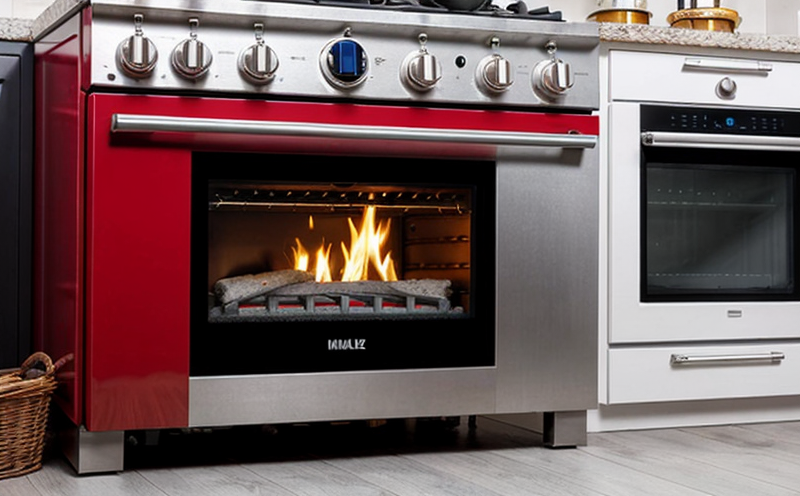Thermal Runaway and Overheating Testing in Appliances
The testing of thermal runaway and overheating conditions in household appliances is a critical process to ensure product safety and compliance with international standards. This section will delve into the intricacies of this specific service, providing detailed insights that are essential for quality managers, compliance officers, R&D engineers, and procurement personnel.
Thermal runaway refers to an uncontrolled increase in temperature within a component or system due to internal factors such as electrical resistance, chemical reactions, or other heat-generating processes. Overheating is the condition where the operating temperature of a component exceeds its design limit, potentially leading to degradation, failure, and even fire hazards.
In household appliances like refrigerators, washing machines, dishwashers, and cooking equipment, thermal runaway and overheating can have severe consequences including personal injury, property damage, and environmental risks. Therefore, rigorous testing is necessary to identify potential issues early in the product development cycle or during quality assurance processes.
During thermal runaway and overheating tests, appliances are subjected to various stressors that mimic real-world operating conditions. This includes exposure to high power loads, prolonged operation under extreme temperatures, and simulation of fault scenarios. Specimen preparation involves selecting representative samples from production batches, ensuring they meet the required specifications for size, material composition, and electrical characteristics.
The testing apparatus used in this service typically consists of temperature-controlled chambers, data acquisition systems, thermal imaging cameras, and power supply units capable of delivering precise voltage and current levels. These instruments are calibrated according to international standards such as ISO 8061 and ASTM E2583 to ensure accurate measurement and reproducibility.
Once the specimens are prepared, they undergo a series of tests designed to identify any signs of thermal runaway or overheating. Key parameters monitored include temperature rise rates, heat dissipation efficiency, and electrical resistance changes over time. Acceptance criteria for these tests are based on industry best practices and regulatory requirements outlined in standards like EN 60335-2-84.
Upon completion of the testing process, detailed reports are generated summarizing all test results and findings. These reports provide comprehensive data on temperature profiles, heat distribution patterns, and any anomalies detected during the tests. They also offer recommendations for improvements to mitigate risks associated with thermal runaway or overheating in future designs.
The importance of this service cannot be overstated as it plays a crucial role in safeguarding end-users from potential hazards related to electrical malfunction. By identifying and addressing these issues proactively, manufacturers can enhance product reliability, extend product lifecycles, and maintain compliance with stringent safety regulations.
Industry Applications
The application of thermal runaway and overheating testing extends across various sectors within the household appliance industry. Refrigeration units require robust insulation materials to prevent heat transfer between compartments while maintaining efficient cooling performance. Washing machines benefit from advanced motor designs that minimize energy consumption yet deliver powerful cleaning capabilities. Dishwashers demand effective drying systems capable of reducing moisture content post-washing cycle. Cooking appliances like ovens and stoves must adhere strictly to flame retardant properties without compromising cooking quality.
For manufacturers involved in these applications, ensuring compliance with relevant international standards such as IEC 60335-2-84 is paramount. Compliance ensures not only adherence to legal requirements but also builds consumer trust through demonstrated commitment to safety and quality.
Environmental and Sustainability Contributions
The implementation of thermal runaway and overheating testing contributes significantly towards environmental protection by promoting sustainable practices within the household appliance manufacturing sector. By reducing waste generation throughout the product lifecycle, manufacturers can adopt more eco-friendly approaches to design and production.
One significant way this service supports sustainability goals is through its contribution to extended product lifecycles. When potential thermal issues are identified early in the development stage, manufacturers have ample time to implement corrective measures that enhance durability without compromising functionality or aesthetics.
Additionally, by minimizing energy consumption during operation, appliances designed with optimized thermal management systems contribute positively to global efforts aimed at reducing greenhouse gas emissions. Efficient cooling and heating mechanisms translate directly into lower operational costs for users while simultaneously contributing to a greener planet.
Competitive Advantage and Market Impact
The adoption of advanced thermal runaway and overheating testing techniques offers significant competitive advantages in the highly competitive household appliance market. These services enable manufacturers to gain a first-mover advantage by introducing safer, more reliable products ahead of competitors.
A reputation for product safety and reliability enhances brand loyalty among consumers who increasingly prioritize health and environmental considerations when making purchasing decisions. This enhanced perception fosters stronger customer relationships leading to increased sales volumes and market share growth.
Moreover, compliance with stringent international standards such as EN 60335-2-84 not only protects against legal penalties but also opens up opportunities for exporting products internationally where similar regulations prevail. This broadens the geographical reach of manufacturers allowing them to tap into larger markets and increase profitability margins.





